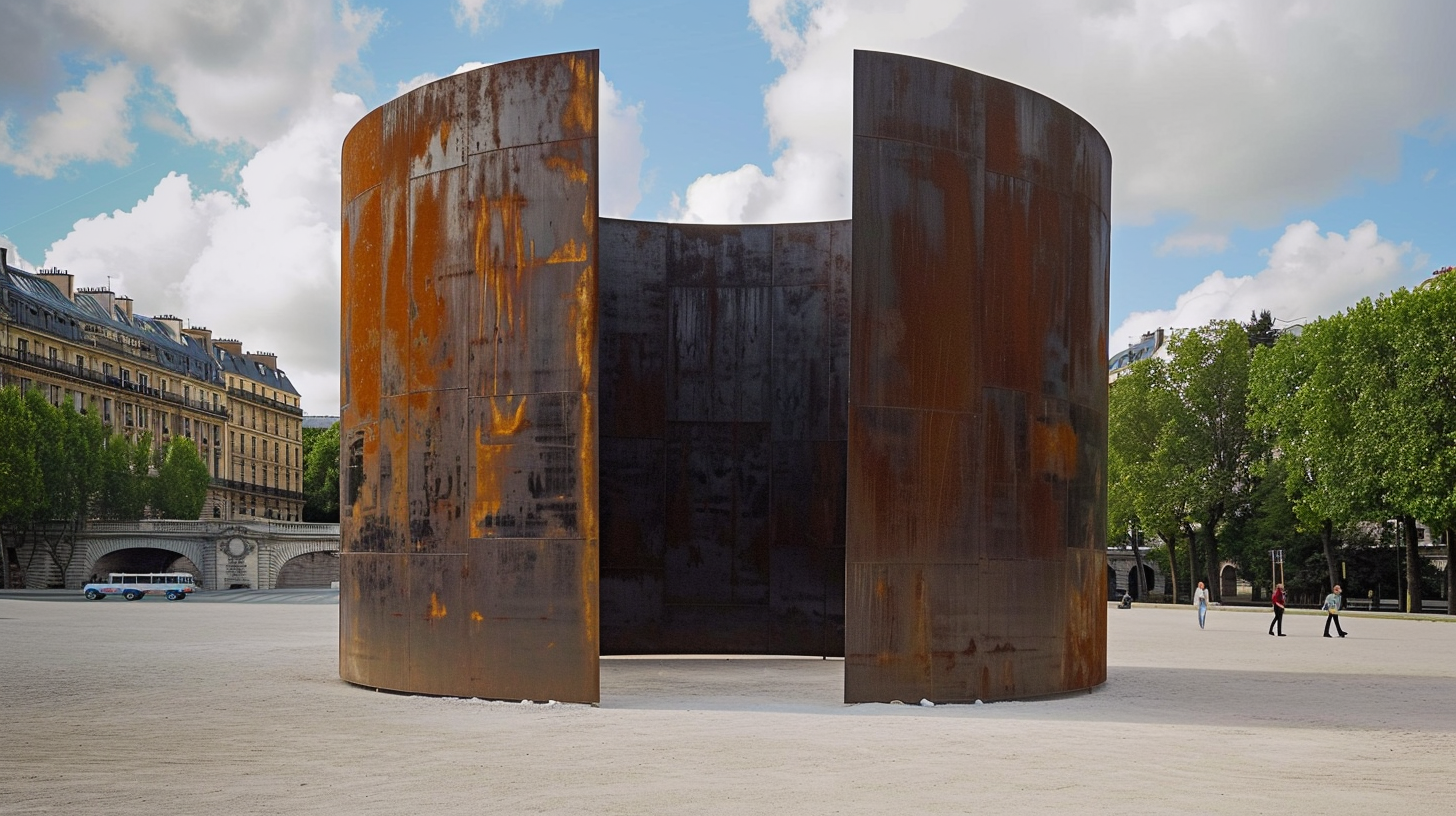
As the city of Paris grapples with the future of Richard Serra’s monumental steel sculpture, Clara-Clara, various discussions and debates have taken place regarding its reinstallation and potential impact on the public. This article delves into the key points surrounding the sculpture and offers unique predictions and recommendations for the industry.
The History of Clara-Clara
Originally created by Serra for a retrospective at Paris’ Centre Pompidou in 1983, the sculpture consists of two massive steel structures that form a walkway when positioned apart. Due to its weight, Clara-Clara was installed in the Tuileries Garden instead of indoors. In 1985, it was acquired by the city of Paris and moved to the smaller Parc de Choisy.
However, the sculpture did not fare well in its new location. It suffered from defacement and damage caused by visitors, leading to its deinstallation in 1993. Clara-Clara remained in storage until 2008, when it was displayed at the Grand Palais for the Monumenta exhibition. This event sparked a debate about where to permanently install Serra’s large-scale sculpture in the city.
The Current Status and Future Plans
Clara-Clara is currently held at the Fonds Municipaux d’Art Contemporain (FMAC), the organization responsible for managing Paris’ collection of over 23,000 works of art. The sculpture was moved to the city’s storage center in Ivry-sur-Seine in 2010.
Recently, there has been renewed interest in the future of Clara-Clara. Aurélien Véron, a member of the municipal opposition group Groupe Changer Paris, raised the question of the sculpture’s future during a debate. Véron emphasized the major financial and historical value of the work.
In response to the inquiry, Carine Rolland, deputy mayor in charge of culture in Paris, stated that officials are considering three possible locations to reinstall Clara-Clara in the historic heart of the city.
Potential Future Trends
The discussions surrounding Clara-Clara’s future highlight several potential future trends in the art industry:
- Curation of Public Spaces: The case of Clara-Clara raises questions about the curation of public spaces in cities. Should major artworks be placed in public parks where they may be vulnerable to environmental and human impact?
- Public Engagement: Artworks located in public spaces can serve as focal points for the community. Future trends may involve increased efforts to engage the public in the decision-making process regarding the placement and preservation of such works.
- Tourist Attractions: Large-scale sculptures like Clara-Clara can become tourist attractions, driving foot traffic and economic benefits to the surrounding areas. Strategic placement and promotion of these artworks could boost tourism in cities.
- Balance between Preservation and Accessibility: The debate surrounding Clara-Clara highlights the challenge of balancing the preservation of valuable artworks with making them accessible and visible to the public. Future trends may focus on finding innovative solutions to address this issue.
Predictions and Recommendations
Based on the current discourse and the evolving trends in the art industry, the following predictions and recommendations can be made:
The reinstallation of Clara-Clara should prioritize a location that strikes a balance between preserving the work’s integrity and making it visible to the public. The historic heart of Paris offers numerous possibilities, such as public squares or the vicinity of important cultural institutions.
The decision-making process should involve the participation of the local community, art experts, and stakeholders. Engaging the public will not only ensure diverse perspectives are considered but will also create a sense of ownership and appreciation for the artwork.
The city of Paris should leverage the potential tourism benefits brought by large-scale sculptures. Promotional efforts, including guided tours and educational programs, can further enhance the visitor experience and attract art enthusiasts to the city.
Investment in robust protection mechanisms should accompany the reinstallation of Clara-Clara to prevent damage from visitors or external factors. This could include the use of technology, such as surveillance cameras and impact-resistant coatings, to ensure the longevity of the artwork.
In conclusion, the future of Clara-Clara and similar artworks lies in finding a delicate balance between preservation and public accessibility. By considering the potential trends in the art industry and implementing robust strategies, cities can ensure the lasting legacy of significant sculptures while maximizing their impact on the community and tourism.
